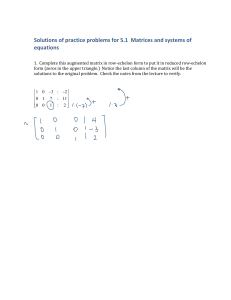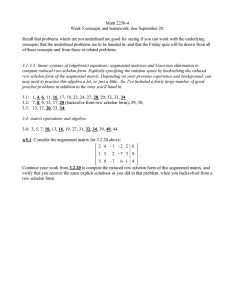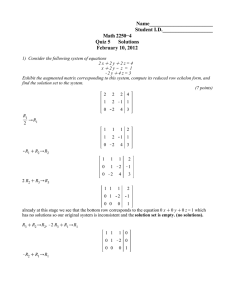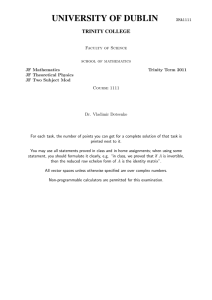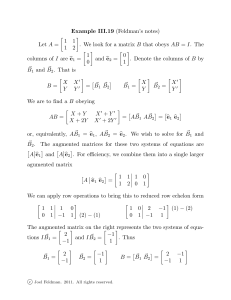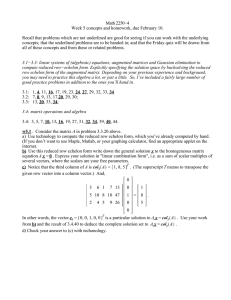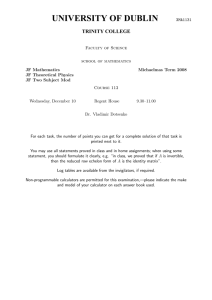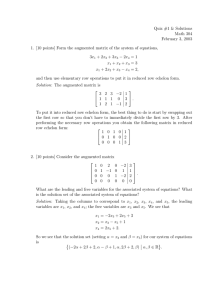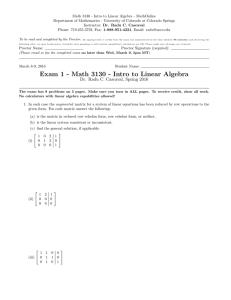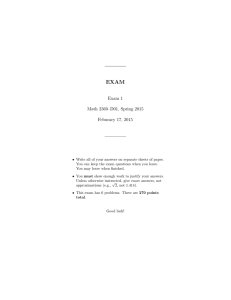Sample Exam 1 - Math 3130 - Intro to Linear... Dr. Radu C. Cascaval, Spring 2016
advertisement
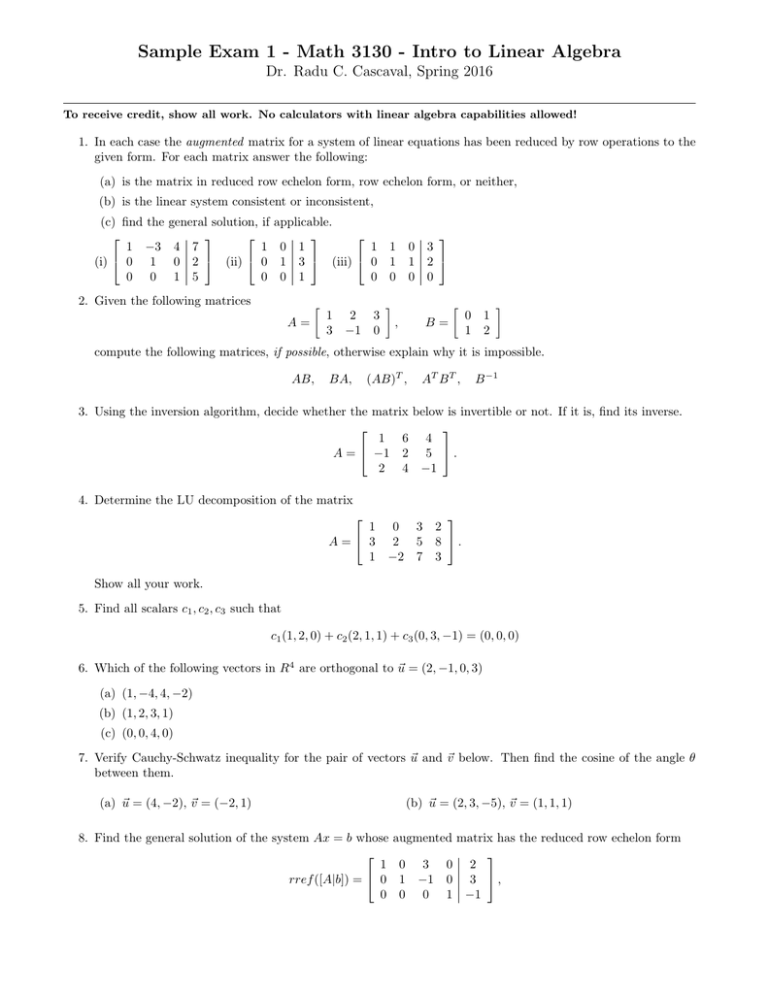
Sample Exam 1 - Math 3130 - Intro to Linear Algebra Dr. Radu C. Cascaval, Spring 2016 To receive credit, show all work. No calculators with linear algebra capabilities allowed! 1. In each case the augmented matrix for a system of linear equations has been reduced by row operations to the given form. For each matrix answer the following: (a) is the matrix in reduced row echelon form, row echelon form, or neither, (b) is the linear system consistent or inconsistent, (c) find the 1 −3 (i) 0 1 0 0 general solution, if 4 7 1 0 2 (ii) 0 1 5 0 applicable. 0 1 1 1 3 (iii) 0 0 1 0 1 1 0 0 1 0 3 2 0 2. Given the following matrices A= 1 3 2 −1 3 0 , B= 0 1 1 2 compute the following matrices, if possible, otherwise explain why it is impossible. AB, (AB)T , BA, AT B T , B −1 3. Using the inversion algorithm, decide whether the matrix below is invertible or not. If it is, find its inverse. 1 6 4 A = −1 2 5 . 2 4 −1 4. Determine the LU decomposition of the matrix 1 A= 3 1 0 2 −2 3 2 5 8 . 7 3 Show all your work. 5. Find all scalars c1 , c2 , c3 such that c1 (1, 2, 0) + c2 (2, 1, 1) + c3 (0, 3, −1) = (0, 0, 0) 6. Which of the following vectors in R4 are orthogonal to ~u = (2, −1, 0, 3) (a) (1, −4, 4, −2) (b) (1, 2, 3, 1) (c) (0, 0, 4, 0) 7. Verify Cauchy-Schwatz inequality for the pair of vectors ~u and ~v below. Then find the cosine of the angle θ between them. (a) ~u = (4, −2), ~v = (−2, 1) 8. Find the general solution of the system Ax = b whose 1 rref ([A|b]) = 0 0 (b) ~u = (2, 3, −5), ~v = (1, 1, 1) augmented matrix has the reduced row echelon form 0 3 0 2 1 −1 0 3 , 0 0 1 −1 9. Given the matrix 1 A= 1 1 x 2 3 x2 4 , 9 (a) Compute det(A) by the co-factor expansion method. (b) Find all values of x such that A is not invertible. (c) Use elementary row operations to reduce A to a row echelon form. Recompute det(A) via this method. 10. Given the matrix 2 A= 0 −2 0 3 3 2 , 0 −4 which method do you prefer to use in order to decide whether A is invertible or not? The inversion method (via Gaussian elimination) or the adjoint method (via determinants)? Choose one of the two (preferably the faster one) and compute A−1 .
![Quiz #2 & Solutions Math 304 February 12, 2003 1. [10 points] Let](http://s2.studylib.net/store/data/010555391_1-eab6212264cdd44f54c9d1f524071fa5-300x300.png)
